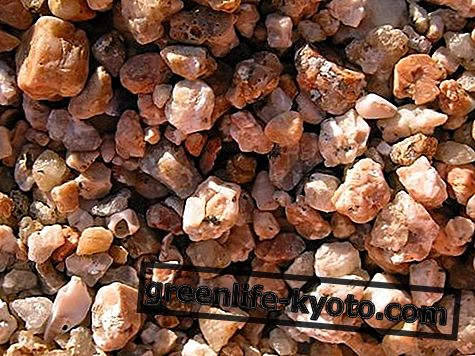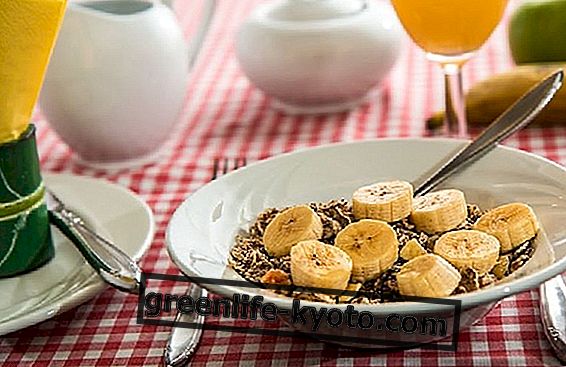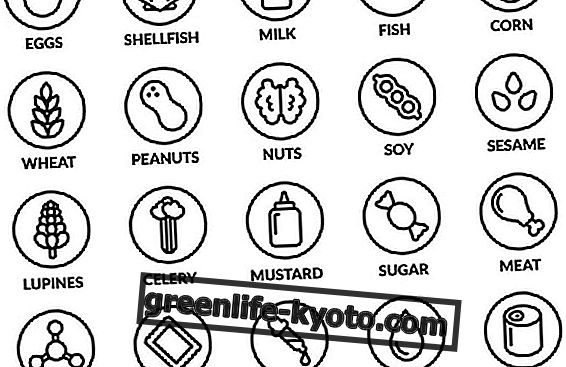
A regular intestinal motility can be guaranteed by a balanced diet, in which foods rich in "slag" are privileged , able to increase the production of fecal mass and to make " gymnastics" in the intestine .
Among the foods to be used in moderation, or severely limited, are foods rich in spices, which can irritate the intestines, those with a lot of sugar and chocolate, refined foods and high-alcoholic beverages.
Instead, they can help against the sluggish intestine:
- fiber-rich foods
- brewer's yeast
- pollen
- infusions
- water
But let's see first what the causes of the lazy intestine are .
When the intestines don't want to work!
Constipation (or constipation) is a common condition in many people, so common that they often go to the family doctor for help and advice.
However, it is not a disease but a symptom that something in our intestines is not working perfectly and that leads, in an extremely annoying way, to symptoms such as lower abdominal pain, swollen belly, inability to evacuate satisfactorily and so on.
For sluggish bowel we mean, clinically, a decrease in the frequency of intestinal discharges (equal to or less than three times a week), therefore a difficulty in regularly emptying the intestine with consequent dehydration and hardening of the stools .
However, the diagnosis of "sluggish bowel" is difficult because in many people even an infrequent evacuation can be normal, provided that it is not painful and leaves no sense of incomplete emptying.
Very often the reported disorders are linked to functional pathologies of the intestine, in others stress, nutrition and the environment are among the causal factors.
On the other hand, the life that the majority of the western population has been living for several decades is sedentary, unruly and stressful, meals are increasingly hasty and messy, excessive consumption of salt, sugars, coffee is now a habit, together with an increasingly scarce fluid intake .
The dietary changes recommended here, useful to help our intestines, must take place gradually because this important organ must be gradually re-educated to avoid that the too rapid increase in dietary fiber causes disorders such as abdominal pain, cramps and flatulence.
Also find homeopathic remedies for the intestine
Foods rich in fiber
A comparison between people who take a diet rich in fiber and those who introduce very little has shown that in the former not only the fecal mass is increased but also that the intestinal transit occurs more quickly since it is completed in 24-36 hours, while in the latter it takes up to 100 (four times more).
Soluble fiber, such as pectin, is present in vegetables and fruit (especially in the skin) and in contact with water has the characteristic of forming a gelatinous mass, while insoluble fiber, such as cellulose, can be found in the dried fruit, cereals and wholemeal derivatives such as rice, bread, pasta and bran and tend to absorb large amounts of water, thus promoting an increase in faeces.
As for the dose of fiber to be introduced daily with food, it is known that the recommendation is about 30 g per day .
This quota can be reached through the consumption of:
- 2/3 servings of raw and cooked fruit a day
- 2 servings of vegetables
- 2/3 portions of products based on whole grains
- 3/4 portions a week of pulses.
Foods particularly rich in fiber include: apricot, seaweed, oat, artichoke, paper, cherry, onion, fig, strawberry, lettuce, aubergine, melon, peach, tomato, leek, plum, grape, pumpkin, bran.
Do you know what other fiber foods are?
Brewer's yeast
It is a useful food in all those situations in which the intestinal bacterial flora must be rebalanced . It can be a valid support by providing "live" microorganisms of Saccharomyces cerevisiae that compete with the onset of a pathogenic bacterial flora, improving instead the beneficial one.
In addition to the fresh form, the brewer's yeast is found as a supplement in tablets or in powder and flakes to be combined, for an energetic and satiating breakfast, with cereals with added milk or in a jar of natural yogurt.
Pollen
It helps, along with other therapeutic foods, to maintain regularity of defecation. It is the food par excellence of the intestine so as to be able to define it as " police officer " of this organ.
The pollen grains, once shredded, can be directly chewed or dissolved in warm beverages. The recommended daily dose is one teaspoon a day, better in the morning at breakfast for its tonic effect.
Pollen has always been used as a restorative with countless properties. Here because
Infusions
Many herbs and plants lend themselves well to performing a function against constipation.
Between these:
- raspberry infusion (dried leaves) to drink two cups a day, of ash (leaves) to drink two cups a day between meals;
- infusion of mallow and chicory (mallow flowers and chicory leaves) to drink one cup early in the morning and one in the evening at least one hour after dinner;
- the decoction of iquirizia to consume a cup a day taken without food in the morning.
water
However, to encourage the action of vegetable fibers, it is always important to introduce at least 1-1.5 liters of water (since this constitutes 80-85% of the faeces) also in the form of various types of drinks such as citrus or fruit juices eventually diluted, herbal teas and tea .













